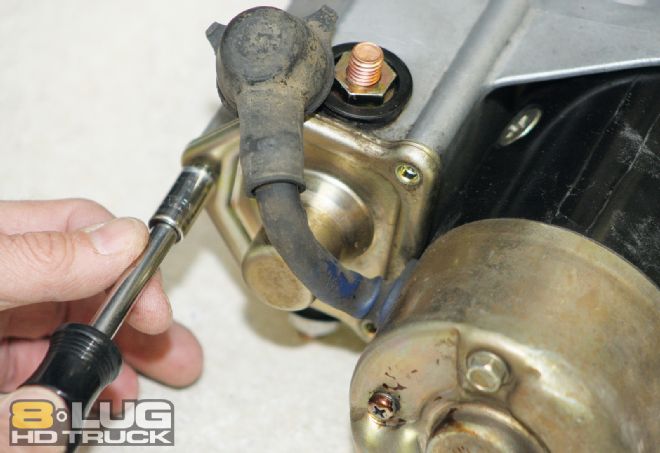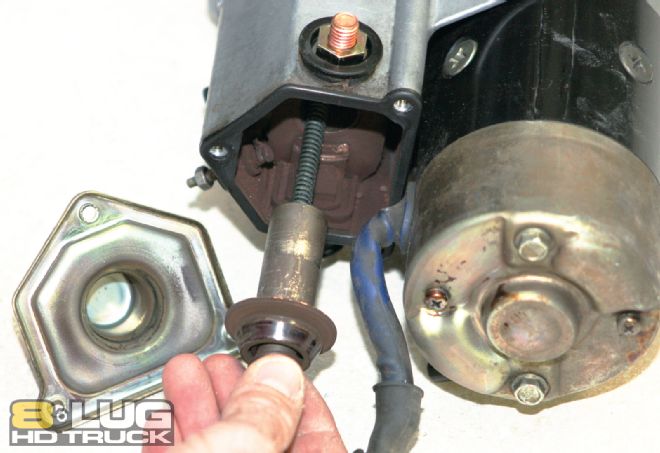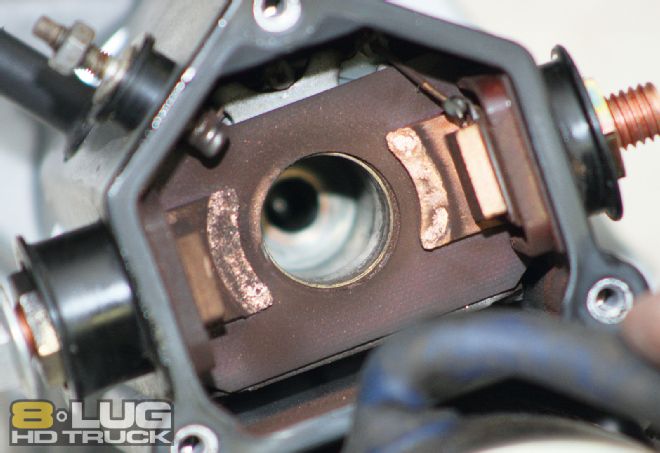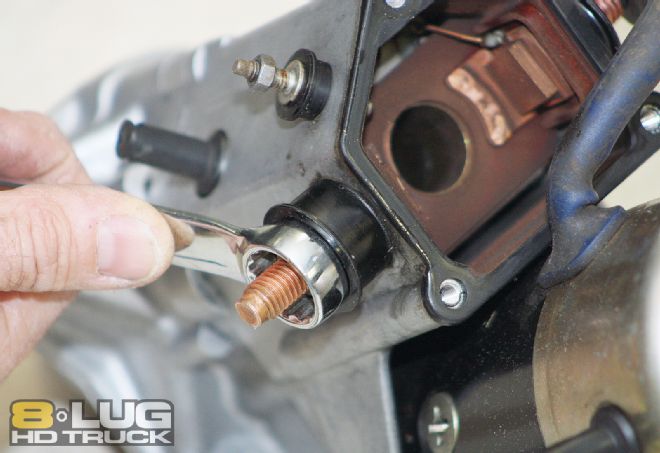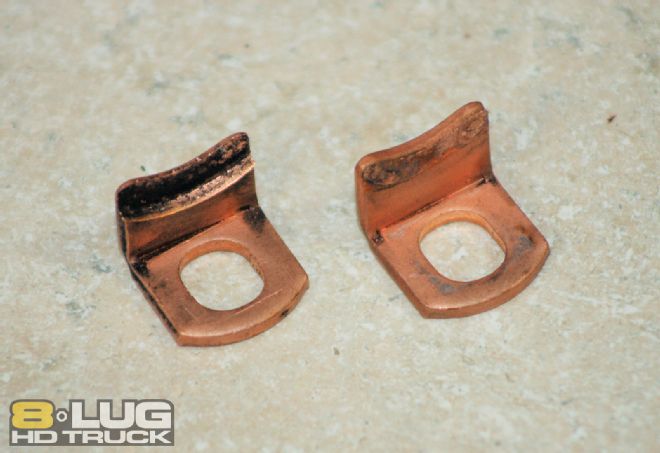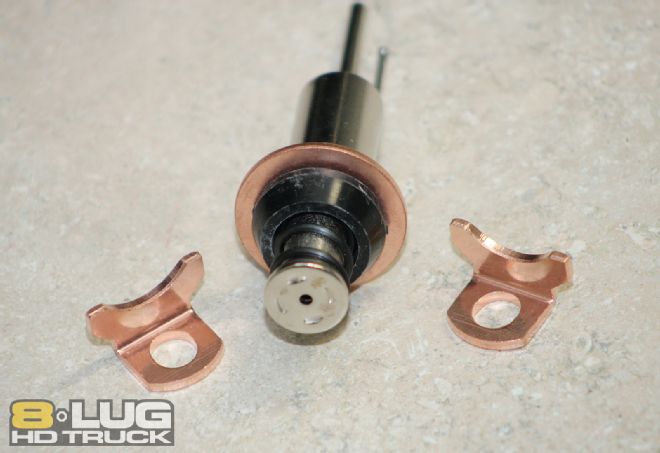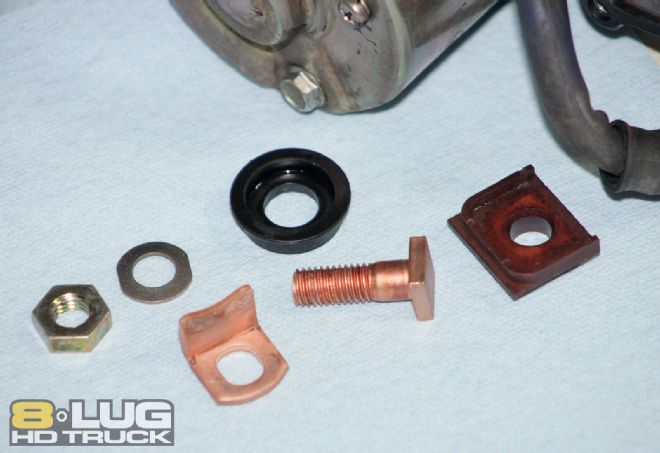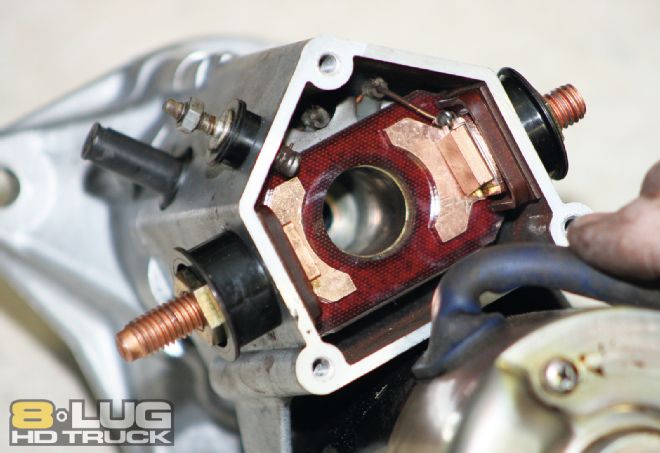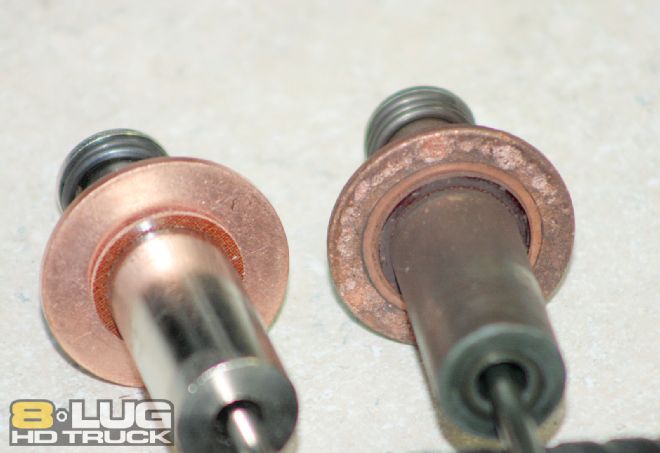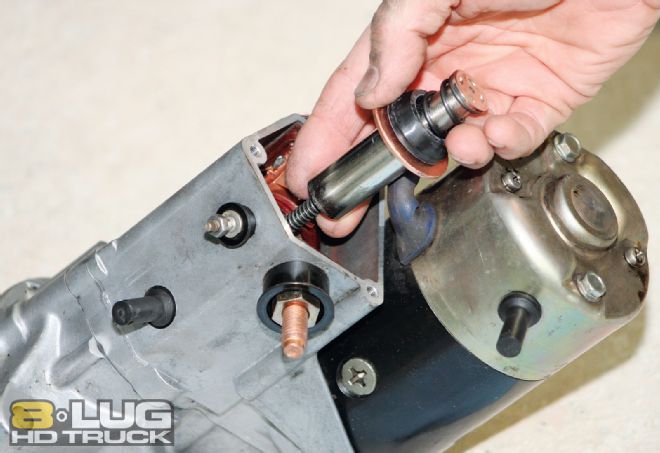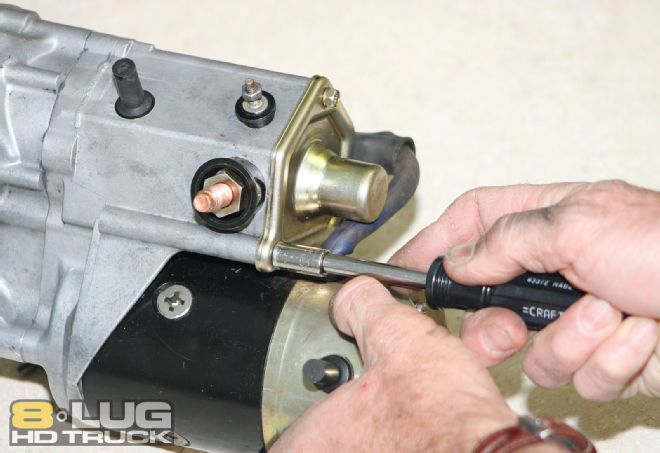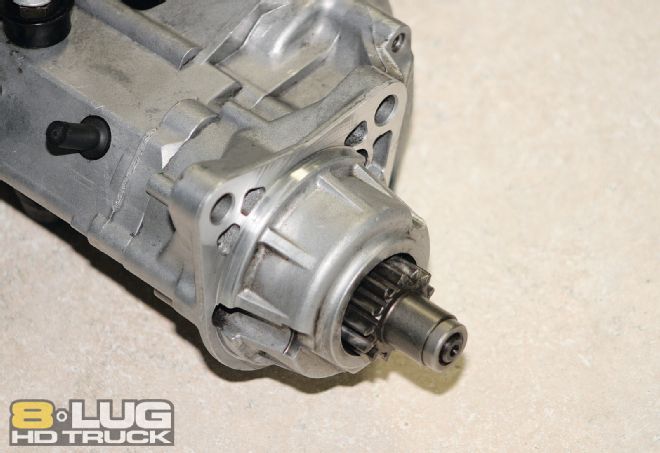You hop in your Dodge diesel and turn the key only to be greeted with a click-click sound, instead of the more familiar whirring of your starter motor. Something is wrong. You somehow knew that the intermittent starting over the last few weeks was telling you something was amiss, and now you're stuck with a vehicle that just won't spin the starter motor.

| starter Solenoid Repair starter
Many of the '89 to '06 Cummins-powered Dodge Rams were sold with a Nippondenso gear reduction starter. (Note: Many Toyotas, Chryslers, Mitsubishis, Hondas, etc. also use this type of Nippondenso starter.) It's robust and reliable and typically lasts about 100,000 miles without any trouble. However, once you near this point, these starters may start to exhibit some intermittent cranking problems. It's a good bet that the cause of the problem is worn copper solenoid contacts that are used to switch on the electrical current to the starter motor.
A new replacement Nippondenso unit will cost you approximately $400. Rebuilds from the local auto supplier might run about half that price. But we can show you how to fix the problem for less than $50 and about an hour of your time.

| The starter consists of three main sections: the motor itself, the electrical solenoid that serves as a big switch to route battery power to the motor, and the gear drive portion on the other end that engages with the flexplate or flywheel on the engine.
Removal of the starter from the truck is fairly straightforward once the battery has been disconnected. It's necessary to disconnect the ignition and battery cables, and then remove the three bolts that secure the starter to the engine.
Follow along as we show you the simple process of replacing the worn copper contacts in one of these starters. It's possible that you could have other issues with your starter, such as worn motor brushes or worn gear drive components, however, these are more prone to surface well past the 250,000-mile mark, so the contact problem is by far the most common ailment.
Basic Starter Tech
Every engine has a starter. It's basically a powerful electric motor used to turn over the engine so that fuel and spark can be applied to get the engine running. Mechanically, the starter motor spins and engages a toothed gear with the toothed flywheel (or drive plate on an automatic transmission) ring gear in order to spin the crankshaft.
There are two main circuits in a starting system. The high-current motor circuit gets its power from a heavy positive battery cable. This cable provides the energy needed to spin the heavy-duty motor. The starter is also attached to a vehicle ground through its mounting flange at the engine or transmission. The second circuit is the ignition circuit. When the vehicle key is used to turn the ignition switch to the spring-loaded Start position, 12 volts are supplied to actuate the starter solenoid. The power supply running from the ignition switch to the solenoid will be a small gauge wire within the vehicle harness.
The solenoid is essentially a high-current relay used to control the application of battery voltage to the starter motor. Like a relay, a low-current control signal is used to switch the high current required by the motor. This allows all the heavy battery cabling to remain short in length and located in the engine compartment. The ignition switch then remotely controls the starter.
Starting System Maintenance/Repair
In general, your starting system requires little maintenance. There are a few things to look out for, though. You should periodically check the battery condition and battery cables for signs of wear or aging that may indicate it's time for replacement. There are several ways a starter can fail. Over a long period of time, mechanical problems such as worn bushings, pinion gear, or drive assembly may occur. However, electrical-related problems are often more prevalent. The solenoid contacts are constantly degrading each time the key is turned to engage the starter. Little by little, the arcing caused by high-current switching erodes the large metal contacts in the solenoid. However, these can often be replaced cheaply with minimal work. Starter motor brushes may also wear out and become erratic as the starter ages.
Starting System Troubleshooting
Whenever you are plagued by starting problems, do not immediately assume the starter is at fault. Check the condition of the battery and all starter and battery wiring and connectors. If your starter cranks slowly or you find your battery charge is suspect, your charging system may not be working properly. If you think your starter function is questionable, most auto parts stores can test it for you.
If the solenoid clicks but the starter does not crank over, the starter motor itself may not be bad. In fact, it is often more likely that one or both of the solenoid contacts are badly worn and unable to pass sufficient current to the starter motor. This type of failure will often show itself as intermittent, getting progressively worse over time. This is the type of failure and rebuild we detail here.
Once a starter fails or becomes unreliable, it is possible to purchase a new replacement, a rebuilt unit, or replacement parts to rebuild the starter yourself. Most repairs can be done with common handtools and are relatively straightforward. If your starter is very old, it may be worthwhile to purchase a new or rebuilt unit, as too many parts may be worn to make your repair worthwhile.
A little water will generally not harm a starter. However, a starter that has been submerged in muddy water may fail prematurely due to sand and mud grinding its way through the brush and bushing areas. If after a dip the starter behaves erratically, it may be necessary to disassemble and flush it out using clean water to clear any debris.
Fortunately, starting systems are quite reliable and should provide many years of trouble-free service. However, knowing a little about how your starting system works and how to do minor repairs will help ensure you get the smooth cranking sound you want when you turn the key.
